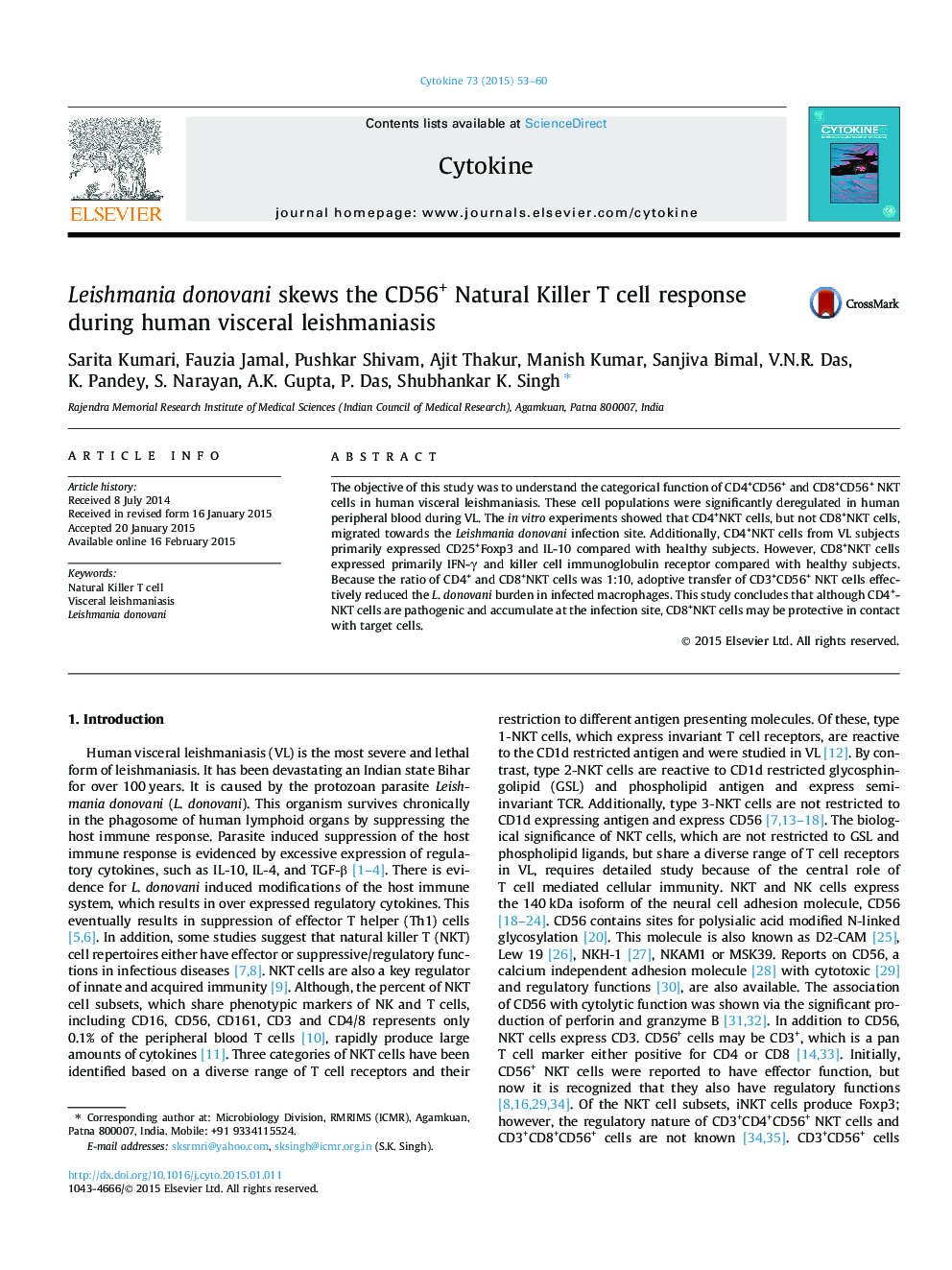| کد مقاله | کد نشریه | سال انتشار | مقاله انگلیسی | نسخه تمام متن |
|---|---|---|---|---|
| 2794027 | 1155244 | 2015 | 8 صفحه PDF | دانلود رایگان |

• Categorical function of CD56+ NKT cells are reported in human VL.
• CD4+NKT cells are pathogenic and accumulates at infection site.
• Majority of the CD56+ NKT cells are CD8+.
• L. donovani prohibits CD8+CD56+ NKT cells to inter into the infection site.
• CD8+NKT cells may prove protective in contact with target cells.
The objective of this study was to understand the categorical function of CD4+CD56+ and CD8+CD56+ NKT cells in human visceral leishmaniasis. These cell populations were significantly deregulated in human peripheral blood during VL. The in vitro experiments showed that CD4+NKT cells, but not CD8+NKT cells, migrated towards the Leishmania donovani infection site. Additionally, CD4+NKT cells from VL subjects primarily expressed CD25+Foxp3 and IL-10 compared with healthy subjects. However, CD8+NKT cells expressed primarily IFN-γ and killer cell immunoglobulin receptor compared with healthy subjects. Because the ratio of CD4+ and CD8+NKT cells was 1:10, adoptive transfer of CD3+CD56+ NKT cells effectively reduced the L. donovani burden in infected macrophages. This study concludes that although CD4+NKT cells are pathogenic and accumulate at the infection site, CD8+NKT cells may be protective in contact with target cells.
CD4+NKT cells are pathogenic and accumulate at infection site. CD8+NKT cells, which cannot accumulate at infection site, may prove protective in contact with target cells.Figure optionsDownload as PowerPoint slide
Journal: Cytokine - Volume 73, Issue 1, May 2015, Pages 53–60